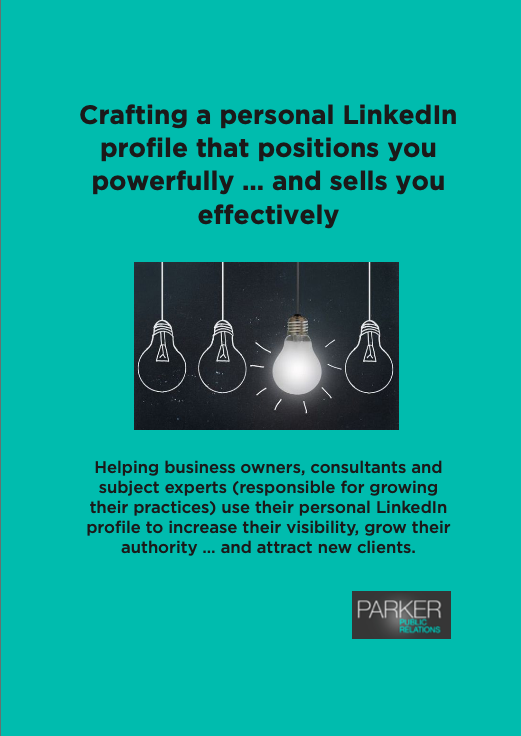Your public relations department is producing stand-out content for your company’s LinkedIn page and your CEO is doing an excellent job engaging with staff and key stakeholders and sharing this content via his or her personal LinkedIn page … but what about the rest of your employees?
How are they using LinkedIn? What are they doing to contribute to the overall visibility of your company’s brand, drive sales and attract talent to your organisation?
Sadly not much.
So, what can corporates (in fact organisations of all sizes) do to turn the tide and make their people their best resource on LinkedIn?
Ensure all employee’s personal LinkedIn profiles are well optimised
Where once upon a time prospective clients’ sales decision was based on what they gleaned from your website or company LinkedIn page, today they’re also scanning your employees’ personal LinkedIn pages. In fact they’re not only checking out your C-suite and senior professionals but they’re also checking out your their cohort – from leaders to interns and everything in between.
So what does this mean for organisations?
They need to ensure employees’ personal profiles are well optimised, easy to find online what is said about them positions effectively as experts in their respective fields.
As a rule of thumb, personal profiles should include:
- A crisp, clear head and shoulders photo which presents your employee as both professional and approachable.
- A relevant banner image. This can either be a standardised business banner or a banner that supports their area of expertise.
- A well-optimised headline (that is the valuable real estate immediately beneath their name). This should clearly articulate what your employee does, the clients they work with primarily, even the challenges they help clients overcome.
- An ABOUT section. This should add meat to the bone by talking about relevant skills and experience, big wins and why they are well placed to help their clients. For greatest impact, this section could start with a story. Perhaps your employee could explain what the catalyst was for embarking on their career choice. What was it that lit their flame?
Encourage senior professionals to engage with authority and insight
While all engagement on LinkedIn should be considered and insightful this is particularly relevant to the C-suite and senior professionals (particularly those responsible for running their own practices or bringing in new customers).
When it comes to this group, research shows that having a strong personal brand and engaging and posting consistently on LinkedIn does much to attract new clients, accelerate business growth and contribute positively to the overall company brand.
So how should corporates assist in this regard?
They should absolutely encourage and teach their C-suite and senior professionals how to:
- Develop their own original content – be it posts, articles or native video. It is important that this content is valuable to prospective clients and answers their most-asked questions and greatest challenges.
- Share relevant media stories, company content and content about their area of expertise and that they do so in a meaningful way by providing additional insights and useful commentary. Do keep in mind that being influential doesn’t always require content creation, and that engagement (provided it is done well) goes a long way on LinkedIn.
Empower employees to become company advocates
As the war for talent intensifies, companies need to be using their employees to help advocate for them and position them powerfully as an employer of choice – an 0rganisation that has a great culture, is fun to work for, inclusive and supportive and has a reputation for training and upskilling staff.
And who better to spread this powerful message than staff members themselves? They understand their organisation better than anyone else does and as a result their engagement is more authentic and believable. According to the Edelman Trust Barometer, people are three times more likely to trust company information shared by an employee than that shared by the CEO!
OK, so what should companies be doing to ensure their employees become better advocates on LinkedIn?
- Provide staff with easy access to pre-approved posts to share on their own personal social media channels.
- For those looking to create their own content ensure they have the necessary guidelines which determine what is acceptable and what is not.
- Encourage staff to share content that speaks powerfully to company culture, diversity and inclusion. Share images (or video) and content from expos, conferences and events as this strongly suggests to prospective talent that your organisation not only encourages professional development but empowers staff to engage online. Equally images from a team building initiative speaks volumes about team cohesiveness and an ability to work together despite coming from very different walks of life.
Parker Public Relations provides one-to-one coaching and group LinkedIn workshops for employees, professionals and subject experts. We also help organisations generate quality content such as blogs, articles, white papers, case studies, newsletters, e-books and opinion pieces.


